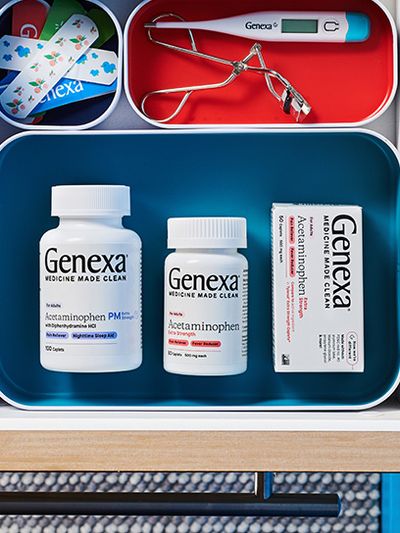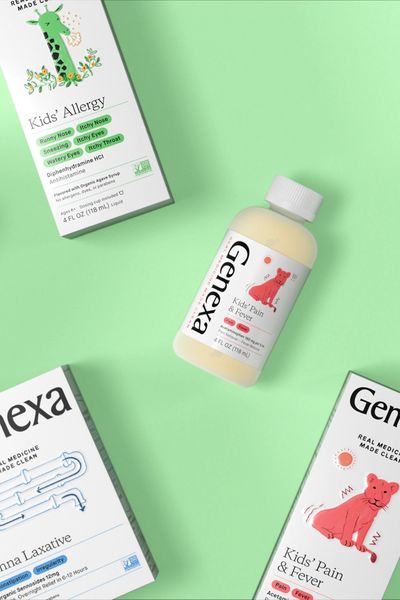Ultra-Processed Foods: What You Need to Know + OTC Medicine Link
What Are Ultra-Processed Foods And How Do They Relate to Over-the-Counter Medicines?
Table of contents:
While much attention is given to ultra-processed foods, over-the-counter (OTC) medicines often escape scrutiny. Surprisingly, many OTC products also contain many of the same artificial additives as ultra-processed foods.
How Are Artificial Additives Used in OTC Medicines?
Over-the-counter medicines are carefully formulated for effectiveness, but they also often contain non-medicinal ingredients to improve taste, texture, and shelf life, many of which are often artificial. These include:
- Artificial additives such as sweeteners, dyes, and preservatives to enhance flavor, color, and shelf life.
- Artificial fillers and binding agents that are synthetically altered.
- Artificial flavorings to make the medicine palatable.
- Artificial stabilizers and processed coatings that help the product dissolve or maintain shelf life.
For instance, a simple cough syrup or chewable pain reliever might contain artificial dyes (like FD&C Red No. 40), synthetic sweeteners (sucralose), and emulsifiers that have no medicinal value but make the product more marketable. These artificial additives reflect the same concerns raised with the artificial additives in ultra-processed foods.
What Are Ultra-Processed Foods?
So, what are ultra-processed foods? To put it simply, ultra-processed foods are products made with ingredients that are chemically or physically altered. These ingredients often include artificial additives, such as artificial flavors, preservatives, emulsifiers, and other substances that do not occur naturally.
Unlike whole or minimally processed foods, ultra-processed foods have little resemblance to their original state. They are designed to be hyper-palatable, long-lasting, and easy to consume—at the cost of nutritional value. Ultra-processed foods prioritize convenience and cost over health, creating products that are cheap to produce and market but may contribute to poor long-term wellness.
Processed vs. Ultra-Processed Foods
Understanding the difference between processed foods and ultra-processed foods is essential:
- Processed foods: These foods undergo minimal changes, such as pasteurization, canning, or freezing. Examples include canned vegetables, fresh bread, or cheese. They still maintain much of their nutritional value.
- Ultra-processed foods: These involve multiple processing stages and added ingredients, such as artificial colors and sweeteners. Examples include chips, soft drinks, instant noodles, and packaged pastries.
The line between processed foods and ultra-processed foods can seem blurry but identifying them becomes easier with practice and awareness. Plus, understanding the distinctions helps to identify specific examples of ultra-processed foods in daily life.
Examples of Ultra-Processed Foods
To help clarify, here is a common ultra-processed foods list:
- Sugary cereals
- Sodas and sugary drinks
- Packaged snacks (chips, crackers)
- Instant noodles and soups
- Frozen ready meals (pizza, burgers)
- Candy and chocolates
- Fast food (burgers, fried chicken, tacos)
- Processed meats (hot dogs, sausages, bacon)
- Artificial creamers and sauces
- Energy bars and shakes
These are often labeled as common ultra-processed foods and are widely consumed worldwide, especially in urban areas. Many of these foods are cleverly marketed as "healthy" or "natural," further confusing consumers about the presence of artificial additives.
Why Are Ultra-Processed Foods Linked to Health Concerns?
Ultra-processed foods are linked to several health issues, including:
- Obesity: High in calories, sugar, and unhealthy fats, ultra-processed foods are one of the main drivers of weight gain.
- Diabetes: Refined carbohydrates and added sugars in ultra-processed foods cause rapid spikes in blood sugar.
- Heart disease: Ultra-processed foods are packed with sodium, trans fats, and artificial additives like chemical preservatives, all of which are harmful to cardiovascular health.
- Digestive issues: Lacking in fiber but filled with artificial compounds, ultra-processed foods can harm gut health.
- Inflammation: The synthetic and artificial additives used in ultra-processed products can trigger chronic inflammation, leading to further health complications.
The worst ultra-processed foods often provide empty calories with little to no nutrients. The body struggles to process these unnatural ingredients, which can result in long-term damage[1].
How to Identify Ultra-Processed Foods
Here are tips on how to identify ultra-processed foods:
- Look at the ingredients list: multiple additives like preservatives, emulsifiers, and artificial additives signal ultra-processing.
- Longevity: if a food has an unusually long shelf life, chances are it’s highly processed.
- Unnatural textures and tastes: foods that feel overly smooth, creamy, or crunchy often result from extensive processing.
Similarities Between Ultra-Processed Foods and OTC Medicines
Both ultra-processed foods and OTC medicines share these key features:
- Artificial additives: contain ingredients like artificial dyes, sweeteners, or preservatives
- Health impact: Some studies show regular consumption may cause long-term health, particularly with prolonged exposure to artificial additives.
Just like ultra-processed foods, the long-term impact of ingesting these additives is a growing topic with researchers and regulators. While OTC medicines are made with proven effective active ingredients that serve a purpose in treating symptoms, using artificial inactive ingredients is no longer the only way to preserve, flavor, and stabilize these products.
Ingredient Innovation: From Artificial Additives to Clean Medicine
In response to growing consumer awareness and demand for cleaner alternatives, some companies are leading the charge in ingredient innovation. Genexa, for example, has pioneered innovation in the OTC medicine space by creating an entirely new category—"clean medicine." Genexa medicines are made with the same effective active ingredients as traditional OTC medicines but replace artificial inactive ingredients with clean alternatives.
For instance, instead of artificial sweeteners or dyes, Genexa uses organic sweeteners and flavors like organic agave syrup, and organic blueberry flavor. This innovation aligns with the clean-label movement seen in the food industry, where consumers prioritize transparency and ingredient quality.
By removing unwanted artificial additives, Genexa is setting a new standard for what medicines can look like. This shift not only provides an alternative option for consumers but also highlights the possibility of creating effective products without relying on artificial additives.
How to Avoid Ultra-Processed Foods (and Reduce Artificial Additives)
Here are practical tips for reducing your exposure to ultra-processed foods and additives:
1. Cook at Home
Home-cooked meals give you control over ingredients, eliminating the need for artificial additives found in packaged foods.
2. Read Labels Carefully
Avoid products with long ingredient lists, especially those with unrecognizable names, numbers, or chemicals that suggest heavy processing.
3. Opt for Whole Foods
Stick to natural, whole foods like fruits, vegetables, whole grains, lean proteins, nuts, and seeds. These provide essential nutrients without the risk of artificial additives.
4. Scrutinize Medicines
When purchasing OTC products, choose those with clean inactive ingredients free of artificial additives. Opt for options that include helpful certifications to signal clean, such as Non-GMO Project Verified or Certified Gluten-Free.
5. Plan Ahead
Prepare meals and snacks in advance so you’re less tempted to reach for ultra-processed foods and convenience products.
6. Stay Informed
Knowledge is power. Learning to distinguish between natural, minimally processed foods, and ultra-processed foods helps you make choices you can feel good about for both food and medicines.
Final Thoughts: Food and Medicine Are One in the Same
The ultra-processed food epidemic has sparked vital discussions about health and nutrition. However, it’s important to extend the conversation to OTC medicines. Just as we review the artificial additives in snacks, sodas, and fast food, we should also be mindful of what we consume in the form of medicines, which are ingested orally just like food.
Both ultra-processed foods and OTC medicines are designed for convenience, and brands like Genexa are pushing innovation forward to create clean alternatives free of the artificial additives consumers are shying away from. By learning how to identify ultra-processed foods and recognizing the similarities with OTC medicines, you can take proactive steps to stock your cabinets with products that align with your values.
[1] Monteiro, C. A., et al. (2018). Ultra-processed foods: what they are and how to identify them. Public Health Nutrition, 21(1), 1-6.







